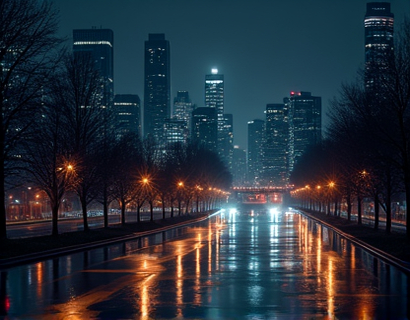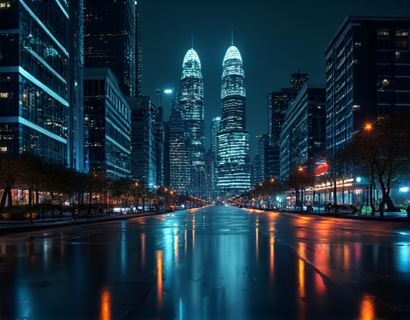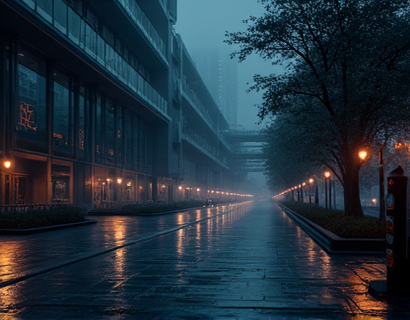Indus Valley: A Journey Through Time - Cultural Heritage, Historical Sites, and Travel Insights for the Curious Traveler
The Indus Valley, one of the world's oldest urban cultures, offers a fascinating glimpse into ancient civilization. Stretching across modern-day Pakistan and northwest India, this region is rich in history, culture, and archaeological wonders. For the curious traveler, exploring the Indus Valley is not just a journey through time but also an opportunity to connect with the roots of human civilization. This travel guide will delve into the cultural heritage, historical landmarks, and practical travel tips to enhance your exploration of this timeless region.
Cultural Heritage of the Indus Valley
The Indus Valley Civilization (IVC), which thrived from approximately 3300 to 1300 BCE, is renowned for its advanced urban planning, architecture, and social organization. The cities of Harappa and Mohenjo-Daro are among the most significant archaeological sites, showcasing the ingenuity of their inhabitants. The people of the Indus Valley were skilled artisans, traders, and farmers, contributing to a vibrant culture that influenced subsequent civilizations.
One of the most remarkable aspects of the Indus Valley culture is its writing system, known as the Indus script. Although it remains undeciphered, the script appears on seals, pottery, and other artifacts, hinting at a complex society with trade networks extending as far as Mesopotamia. The art and craftsmanship of the Indus Valley people are evident in their intricate pottery, jewelry, and terracotta figurines, reflecting their aesthetic sensibilities and daily life.
Historical Sites to Explore
Traveling through the Indus Valley offers a chance to visit several historical sites that provide insight into this ancient civilization. Here are some must-visit locations:
1. Mohenjo-Daro
Mohenjo-Daro, meaning "Mound of the Dead," is one of the most significant archaeological sites of the Indus Valley Civilization. Discovered in the 1920s, this ancient city features well-planned streets, advanced drainage systems, and impressive public buildings. The Great Bath, a large public water tank, is a highlight, believed to have been used for ritualistic purposes. Visitors can explore the ruins and imagine the bustling life that once thrived here.
2. Harappa
Harappa is another key site that showcases the urban planning and architectural prowess of the Indus Valley people. The site features a citadel, residential areas, and a sophisticated drainage system. The Harappa Museum houses a collection of artifacts, including pottery, seals, and tools, providing context to the daily lives of its ancient inhabitants. A visit to Harappa offers a deeper understanding of the civilization's social and economic structures.
3. Taxila
Located near Islamabad, Taxila is a UNESCO World Heritage Site that dates back to the 6th century BCE. While it is primarily known for its Buddhist heritage, Taxila was also a significant center of learning and trade during the Indus Valley period. The ruins of ancient monasteries, stupas, and educational institutions can be explored, making it a fascinating stop for history enthusiasts.
4. Lothal
Lothal, situated in Gujarat, India, is famous for its dockyard, which is one of the earliest known in the world. This ancient port city played a crucial role in maritime trade, connecting the Indus Valley with distant lands. The well-preserved ruins, including warehouses and residential areas, provide insight into the economic activities of the time. Lothal's significance as a trade hub makes it a vital part of the Indus Valley narrative.
5. Dholavira
Dholavira, located in the arid region of Gujarat, is known for its sophisticated water conservation systems and urban planning. The site features a large citadel, reservoirs, and a unique system of water management that reflects the ingenuity of its inhabitants. Dholavira's impressive architecture and engineering marvels make it a must-visit for those interested in the technological advancements of the Indus Valley Civilization.
Hidden Gems and Local Attractions
Beyond the well-known archaeological sites, the Indus Valley is home to hidden gems that offer unique experiences for travelers. Here are some local attractions worth exploring:
1. The Indus River
The Indus River, which flows through the heart of the valley, is not only a lifeline for the region but also a source of breathtaking natural beauty. Travelers can enjoy scenic boat rides, explore riverside villages, and witness the daily life of local communities. The river's significance in the history of the Indus Valley cannot be overstated, as it supported agriculture and trade for millennia.
2. The Archaeological Museum in Karachi
The Archaeological Museum in Karachi houses an extensive collection of artifacts from the Indus Valley Civilization. Visitors can view pottery, seals, and sculptures that provide insight into the artistic and cultural achievements of the time. The museum's exhibits are well-curated, making it an excellent starting point for understanding the history of the region.
3. The Ruins of Chanhu-Daro
Chanhu-Daro, located in Sindh, Pakistan, is a lesser-known archaeological site that offers a glimpse into the daily lives of the Indus Valley people. The site features residential structures, pottery, and tools, providing valuable information about the culture and economy of the time. Exploring Chanhu-Daro allows travelers to experience the quieter side of Indus Valley history.
4. The Tomb of Shah Rukn-e-Alam
Located in Multan, Pakistan, the Tomb of Shah Rukn-e-Alam is a stunning example of Islamic architecture built in the 14th century. While not directly related to the Indus Valley Civilization, the tomb reflects the region's rich cultural heritage and serves as a reminder of the historical layers that have shaped the area. The intricate tile work and grand structure make it a worthwhile visit.
Practical Travel Tips
Traveling to the Indus Valley can be an enriching experience, but it's essential to plan ahead. Here are some practical travel tips to enhance your journey:
1. Best Time to Visit
The ideal time to visit the Indus Valley is during the cooler months, from October to March. The weather is pleasant, making it easier to explore outdoor sites. Summers can be extremely hot, while monsoon season may bring heavy rains, affecting travel plans.
2. Local Transportation
3. Cultural Sensitivity
When traveling in the Indus Valley, it's important to respect local customs and traditions. Dress modestly, especially when visiting religious sites, and be mindful of local etiquette. Engaging with locals and learning about their culture can enhance your travel experience.
4. Stay Hydrated and Safe
Traveling in the Indus Valley can involve long days of exploration, so it's crucial to stay hydrated. Carry bottled water and snacks, especially when visiting remote sites. Additionally, be aware of your surroundings and take necessary precautions to ensure your safety while traveling.
5. Engage with Local Guides
Hiring a local guide can greatly enrich your experience in the Indus Valley. Guides can provide valuable insights into the history and significance of the sites you visit, as well as share stories and anecdotes that bring the past to life. Look for certified guides who are knowledgeable about the region's history and culture.
Conclusion
The Indus Valley is a treasure trove of history, culture, and adventure waiting to be explored. From the ancient cities of Mohenjo-Daro and Harappa to the hidden gems along the Indus River, this region offers a unique opportunity to connect with the past. Whether you're a history buff, a cultural enthusiast, or simply a curious traveler, the Indus Valley promises an unforgettable journey through time. With this travel guide in hand, you're well-equipped to embark on an enriching exploration of one of the world's most significant ancient civilizations.










































